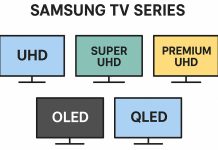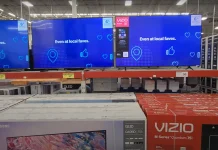The issue of Samsung Smart TVs turning on and off by themselves is relatively common. At times, the TV may turn off, only to power back on after a short while. There are several potential causes for this malfunction, and in some cases, identifying the source of the problem can restore the TV to normal functionality. Here’s how you can troubleshoot and determine the cause of the issue.
When does the malfunction occur?
Malfunctions in a TV’s operation often become apparent based on the timing of when the device turns off. If the TV initially powers on and functions normally for a short period before it begins to turn on and off repeatedly, this usually indicates that certain electronic components are becoming unstable or failing once they heat up. On the other hand, if the TV shuts down immediately after being turned on, the issue is more likely due to faulty parts such as the power supply—a common culprit—the motherboard, the Wi-Fi module, or even the screen matrix. These kinds of failures can lead to excessive power draw, which in turn activates the power supply’s overload protection. In cases where the TV shuts down during the boot process and never reaches the operating system, the problem often lies in a defective power supply or a corrupted memory chip. This kind of behavior may also occur if incorrect settings have been applied in the service menu.
Possible causes of switching on and off
For more in-depth troubleshooting, certain signs can point to specific technical issues. If the screen goes black but then the image returns without sound, this typically indicates a fault within the electronic components. Conversely, if there is sound but no image, the issue is most likely with the screen matrix.
Another common symptom is the TV repeatedly rebooting after the logo appears, never reaching the main interface. This behavior suggests the system is unable to enter its normal operating mode, often due to a malfunctioning power supply, main board, or T-con (timing control) board. In some cases, a severe failure of the operating system may also be the cause.
Such problems generally require professional repair. While components like the power supply can usually be repaired or replaced at a reasonable cost, damage to the screen matrix is far more expensive to fix—sometimes approaching 90% of the cost of a new TV. For out-of-warranty devices, this often makes replacement a more practical option.
Troubleshooting options on your own
To begin troubleshooting, start with a few simple steps that can often resolve the issue without the need for repairs.
First, unplug the TV from the power outlet and wait at least one minute—ideally two to three minutes—before plugging it back in. As recommended by Samsung, this basic reset can sometimes clear minor glitches and restore normal operation.
Next, disconnect all HDMI cables and observe how the TV behaves without them. If the issue persists, go into the TV’s settings and disable the HDMI-CEC function (also known as Anynet+). This feature allows HDMI-connected devices to communicate with and control each other—for example, a game console can turn the TV on or off. However, a malfunction in one of these connected devices or a compatibility issue—especially between older and newer equipment—can cause the TV to turn on and off unexpectedly. Disabling HDMI-CEC can help rule out this source of interference.






